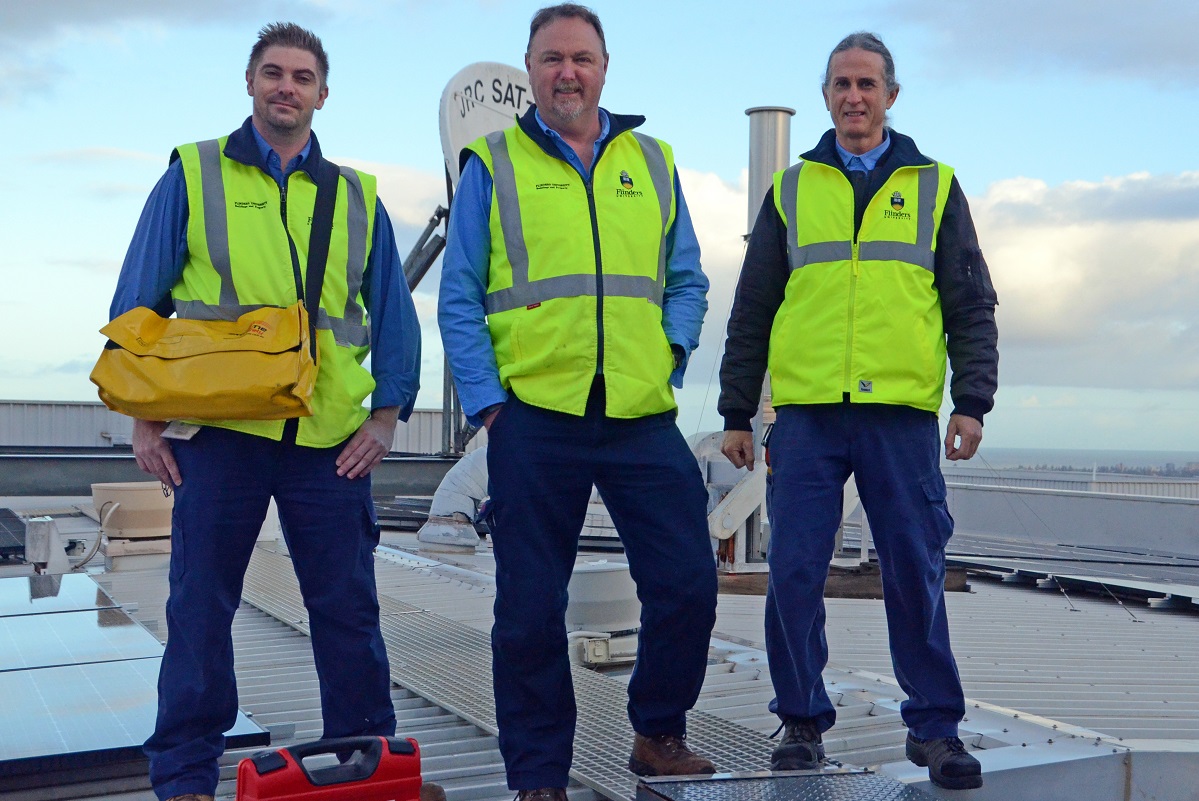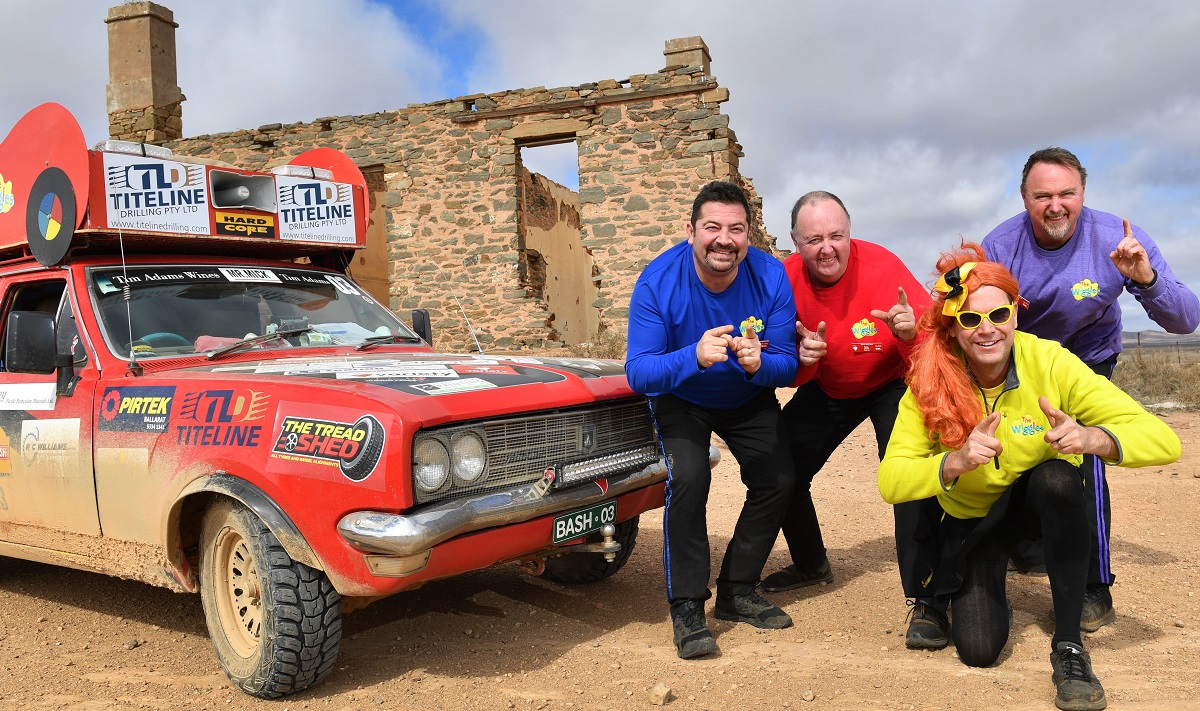
Craig Brown is Team Leader Electrical at Flinders and fronts a small but powerful team charged with maintaining electricity at the University – and all the complexities around safety, sustainability and efficiency.
What do you do at Flinders University?
With power critical to pretty much everything that happens on main campus and even the multiple activities that connect remotely, the scope is complex.
I manage a very small but awesome internal team and a broad range of external service providers with a focus on keeping all our electrical infrastructure running safely, robustly and effectively whilst maintaining compliance to relevant legislation.
I find myself simply explaining it as “keeping the lights on” as it’s easier for most to get their head around!
Another important aspect of the role (which also crosses over with personal interest) is actively implementing multiple operational efficiencies from a technical perspective, as well as close involvement with many stakeholders including PFD project delivery and sustainability areas in driving Flinders energy consumption and associated carbon footprint downwards.
Can you briefly share your career journey that led you to Flinders?
I have worked in the electrical industry across a few different formats all of my working life. I started with a trade apprenticeship in electrical installation and contracting works in private industry involving repairs and rewiring older houses, then managed a range of major infrastructure upgrade projects and new construction for all sorts of clients from corporate and industrial through to wineries and businesses large and small.
From there, I worked in a service-focused facility co-ordinator role at the University of Adelaide’s Waite Campus, before being attracted to the new challenge of this position at Flinders where I have been since 2011. I’m always prudent to be careful when talking about seeking new challenges, as I certainly haven’t been bored at Flinders! In fact, I see the rapid changes in technology and the quest to constantly adapt, rethink and improve is what keeps me engaged with the role, my career and life more generally.
What does a standard day look like for you?
We’re very early starters on campus with early morning the best opportunity to complete work like fixing lights and safely undertaking electrical repairs with localised shutdowns, or setting up power for various events and testing back-up systems etc. This minimises disruption before most campus activities get underway.
From there, as the University springs to life, we resolve a range of urgent and routine reactive or programmed maintenance requests as they arise through the day, attend many meetings and interact in different formats with internal and external stakeholders. These might be engineers, project managers, service providers and specialist contractors together with research and teaching staff and students, and portfolios like Flinders Living.
Overall, we help facilitate and guide new works in a safe and feasible manner whilst maintaining all the elements of our current electrical infrastructure and control systems.
What do you see as the opportunities for electrical infrastructure at Flinders ?
To supply power to a campus so large, Flinders University owns and maintains its own ‘microgrid’ that buys and distributes power throughout our 16 substations, so we are able to leverage benefits from integrating emerging technologies.
Most people know about our significant solar generation. With broad take-up in solar electricity generation in recent years, the biggest challenge of the renewable energy sector and Flinders’ role in it, is variability of generation and linking supply to the load it supports. This is sometimes referred to as ‘Grid Stability’.
With impressive targets set for renewable energy, the University’s challenges are to balance and stabilise the energy generated and consumed. My utopian world sees a campus that works like a living breathing energy source, with renewables supplying all of our infrastructure needs, including charging electric transport of all descriptions via wireless induction connections for students and staff while there is excess power generated in grid, and releasing energy at times of peak demand.
There is still much to be done by way of LED lighting, air-conditioning and control upgrades, and energy storage options to complement our efforts with renewable generation.
What do you like to do in your free time?
Our main campus and its 24/7 operational needs does tend to consume me, however I attempt to balance this with my equally important family role away from work as a dad who tries hard (they’ll tell you sometimes is a ‘try hard’ ) to keep up with my two fantastic and inspiring teenage daughters. With my amazing wife, we enjoy travel of all kinds as a family whenever and wherever possible.
I have a number of serial home renovation projects on the go, and when not chasing after and sorting my kids’ logistics or fixing something, you’ll likely find me bobbing about in the ocean in our small tinny chasing squid along Adelaide’s beautiful southern coastline.
What makes you proud?
If we are doing our jobs well, most of my team’s work becomes invisible. It may sound a bit odd but we do have a sense of pride in seeing the campus at its vibrant busiest with student and research activity everywhere, knowing that pretty much every aspect is being enabled by the power we assist to deliver safely and robustly – and with a solid and ever-increasing proportion of that generated directly on site from renewable sources.
Finally, can you tell us something people may not know about you?
I normally work behind the scenes wearing the standard Flinders corporate blue driving a somewhat plain white ute, however around this time last year I briefly swapped that for a bright purple skivvy, volunteering to help guide a vintage big red wiggle car around the back tracks of SA’s far North on the Variety charity bash run (pictured below).
The sparky skills came in handy keeping things working as the aging car ( and it’s four colourful occupants) rattled, laughed and dodgy wiggle-danced our way through some of the most scenic and remote parts of our country whilst raising funds for disadvantaged children. It was an awesome opportunity to be part of.


